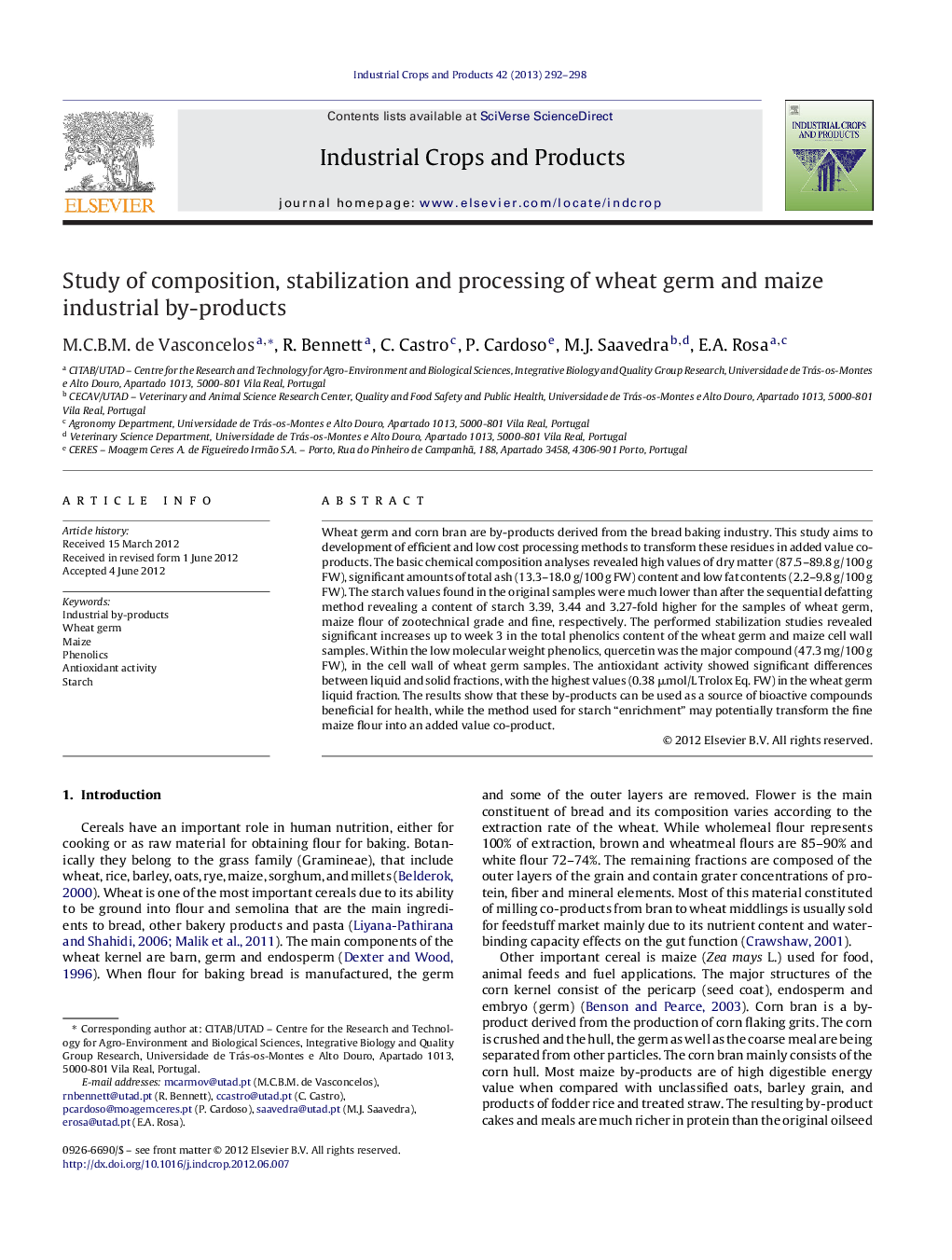| Article ID | Journal | Published Year | Pages | File Type |
|---|---|---|---|---|
| 4513746 | Industrial Crops and Products | 2013 | 7 Pages |
Wheat germ and corn bran are by-products derived from the bread baking industry. This study aims to development of efficient and low cost processing methods to transform these residues in added value co-products. The basic chemical composition analyses revealed high values of dry matter (87.5–89.8 g/100 g FW), significant amounts of total ash (13.3–18.0 g/100 g FW) content and low fat contents (2.2–9.8 g/100 g FW). The starch values found in the original samples were much lower than after the sequential defatting method revealing a content of starch 3.39, 3.44 and 3.27-fold higher for the samples of wheat germ, maize flour of zootechnical grade and fine, respectively. The performed stabilization studies revealed significant increases up to week 3 in the total phenolics content of the wheat germ and maize cell wall samples. Within the low molecular weight phenolics, quercetin was the major compound (47.3 mg/100 g FW), in the cell wall of wheat germ samples. The antioxidant activity showed significant differences between liquid and solid fractions, with the highest values (0.38 μmol/L Trolox Eq. FW) in the wheat germ liquid fraction. The results show that these by-products can be used as a source of bioactive compounds beneficial for health, while the method used for starch “enrichment” may potentially transform the fine maize flour into an added value co-product.
► By-products (maize and wheat) were generated by a major bread baking Portuguese company. ► Development of efficient/low cost processing methods to create added value co-products. ► By-products are a rich source of bioactive compounds with beneficial health effects. ► Stabilization studies showed significant increases of total phenolics in the wheat germ. ► The novel sequential defatting method used increased the starch content.
